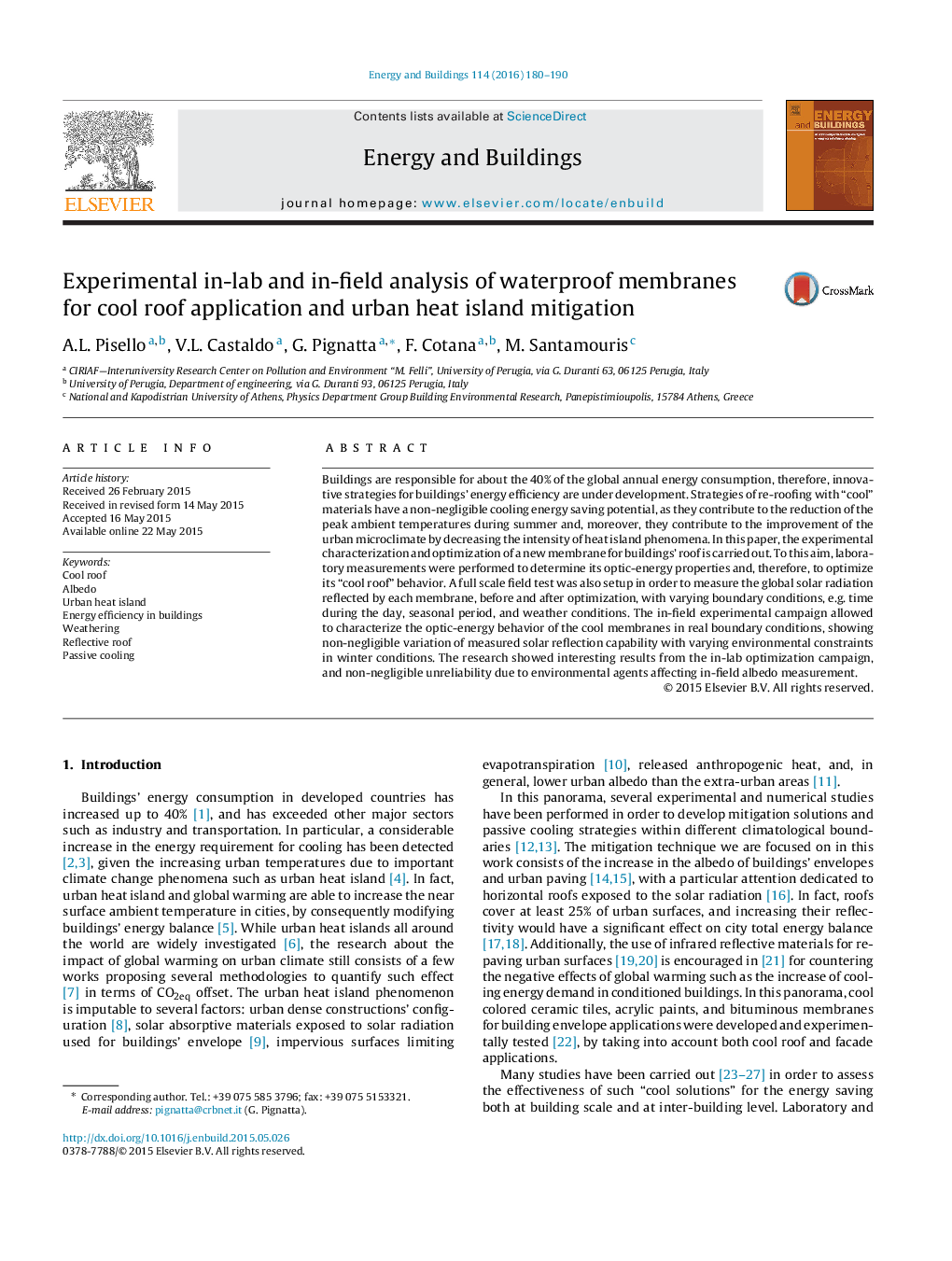| Article ID | Journal | Published Year | Pages | File Type |
|---|---|---|---|---|
| 262131 | Energy and Buildings | 2016 | 11 Pages |
•Lab/field experimental analysis of innovative cool roof membranes is carried out.•In-lab campaign is performed to optimize reflectance and self-cleaning capability.•Effect of environmental agents on varying field measured albedo is investigated.•Non-negligible variation of measured albedo due to environmental agents is found.•Field measure is not reliable to detect accurate optimizations as observed in lab.
Buildings are responsible for about the 40% of the global annual energy consumption, therefore, innovative strategies for buildings’ energy efficiency are under development. Strategies of re-roofing with “cool” materials have a non-negligible cooling energy saving potential, as they contribute to the reduction of the peak ambient temperatures during summer and, moreover, they contribute to the improvement of the urban microclimate by decreasing the intensity of heat island phenomena. In this paper, the experimental characterization and optimization of a new membrane for buildings’ roof is carried out. To this aim, laboratory measurements were performed to determine its optic-energy properties and, therefore, to optimize its “cool roof” behavior. A full scale field test was also setup in order to measure the global solar radiation reflected by each membrane, before and after optimization, with varying boundary conditions, e.g. time during the day, seasonal period, and weather conditions. The in-field experimental campaign allowed to characterize the optic-energy behavior of the cool membranes in real boundary conditions, showing non-negligible variation of measured solar reflection capability with varying environmental constraints in winter conditions. The research showed interesting results from the in-lab optimization campaign, and non-negligible unreliability due to environmental agents affecting in-field albedo measurement.
